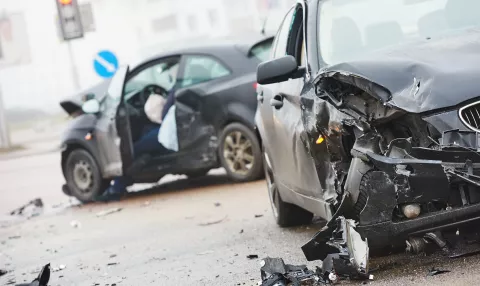What to check before going for a long drive?
Every holiday period involves trips, longs drives and lots of planning. Wherever you are going, you need to take some precautions before taking the road. Here are some tips to drive safely and start your trip with no issues!

1 – Check and clean your windscreen wipers
They are essential in case of heavy rain or to remove dirt. There are different signs that show your windscreen wipers should be changed: if it has difficulty sliding, rubbing noises or strange movements… Sometimes it can just mean they need to be clean. Grab a cloth and clean them. You could save some money and troubles!
2 – Check your headlights
Headlights, indicators and rear lights need to be checked before any holiday departure. Their good working condition will enable other drivers to see you and also to keep you safe and to avoid fines. Ask a family member or a neighbour to help you check!
3 – Check your windscreen
If you see damage or imperfections and worry it might be serious, ask you Point S mechanic during your next visit. It is important to take care of deep cracks and chips in the glass as it can be dangerous.
4 – Check the condition and the pressure of your tyres
There are 3 main elements to consider when it comes to tyres:
-Tyre pressure need to be checked before any long drive. It is recommended to check when it is cold so the heat does not affect the reading. Good tyre pressure will make you save fuel and minimise the wear of your tyres.
-The tyre tread depth should exceed 1.6mm. Below this, your tyres are not safe and it increases your accident risk.
-Checking your tyre alignment and balance is important.
In good auto maintenance practices, tyres should be checked every 5,000 kms.
5 – Check your radiator
During summer, one of the reasons why the engine overheats is the radiator or a problem stemming from a fluid leak. When you stop your car, if you see a green, orange or yellow liquid under your car, it means there is a cooling liquid leak. You need to fix the problem before doing any long drive.
6 – Check your vehicle liquid’s levels
The oil, refrigerant (for the air-conditioning) and wiper fluid must be checked. A lack of oil can damage the engine and the lack of refrigerant can break the air-conditioning system. Those fixes are very expensive, that is why it is important to check those liquids levels regularly.
Power steering fluid and transmission fluid must be checked as well. If you have difficulty turning your vehicle and your steering wheel vibrates a lot when you stop, it means there is a lack of power steering liquid. Transmission fluid must be checked as well, especially if your car has a lot a mileage.
7 – Check your timing and driving belt
Make sure this aspect is checked during your next visit. Changing a belt isn’t expensive but repairing a damage caused by a broken belt is. The belt must be checked every 75,000 kms to 130,000 kms depending on your vehicle, by someone experienced.
8 – Check your exhaust pipe and rust
If you hear noises when you drive over potholes, your exhaust pipe might be detached. Most of the time, this fix just requires a little welding. When looking under your vehicle, pay attention to rust. If the rust has been there for a long time, it could break certain components when your car receives impacts. Have the rust on your car checked by a certified centre.
9 – Check your brakes
There are essential for your safety and other drivers’ safety. When you brake, and you feel that your braking distances increased and that when it is raining it is even worse, have your car checked immediately. Usually, brakes should be checked every 6 months.
10 – Check your battery and signs of corrosion
You can check it with a multimeter. The voltage should be between 12.5v for a 100% charge, and 14.5v when the motor is running. A voltage of 12.0v is equal to a charge of 25%, meaning you should charge your battery. Several signs can indicate a problem, such as:
- If start-up is slow or is difficult
- A rotten egg smell (sulphur), coming from a leak
- The electrical equipment is not functioning properly
If you are unsure, ask your mechanic. It is good to check the battery every 3 months.
11 – Check your emergency equipment
First aid-kit, spare tyres and tools must be in good condition. Also check that all your papers are up-to-date such as your license.
If you have all of these checked, you can drive with peace of mind while feeling safe in your vehicle.
However, if you'd rather have your vehicle checked by a professional, make an appointment directly with one of our experts!


